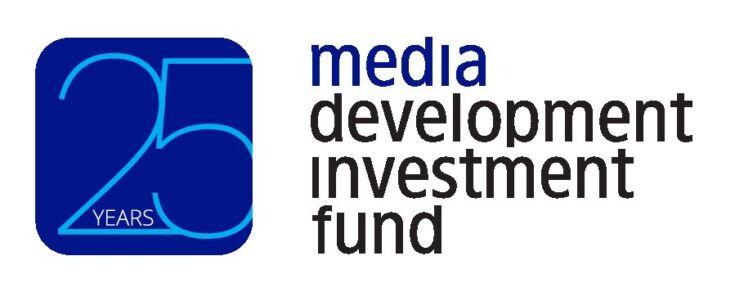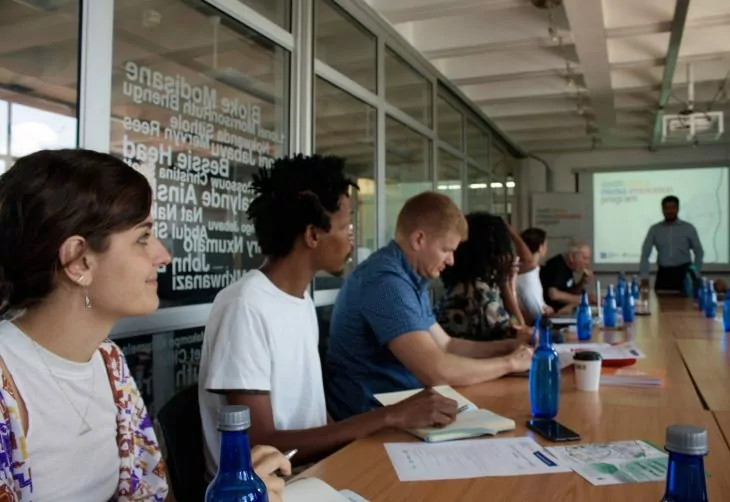By Bilal Randeree, Program Director for Africa & MENA.
In a time of global crisis for independent media, only worsened by the fallout of the coronavirus pandemic, the South Africa Media Innovation Program (SAMIP) has endeavoured to be a space of resilience, inspiration and adaptability for the media sector.
SAMIP is an initiative launched by MDIF in August 2017 with funding from Luminate and the Open Society Foundation of South Africa (OSF-SA). The pandemic hit just as SAMIP entered its third year, wreaking havoc on planned work and activities but opening up new opportunities – for those looking out for them. The SAMIP team took advantage of this to leverage a critical component of the programme design – the flexibility to adapt.
While innovation, in relation to programme participants’ product offerings, remained a focus, SAMIP played an important role in driving innovative thought, sharing solutions and helping participants to see their work in different ways. We did this by focusing on the core programme pillars of agility, collaborative spirit and willingness to experiment and make use of a blend of strategies.
SAMIP was designed to accelerate digital media innovation among independent media outlets, support the development of public interest digital publications and drive transformation and foster new and diverse voices. We have worked with over 20 participating media organisations, through a combination of technical support, capacity building and grant funding. The participants are drawn from across the media sector, including digital news publishers, youth media outlets focusing on politics and popular culture, investigative journalism, podcasting and audio, and non-profits seeking to address gender gaps in the mainstream media.
An ongoing, independent evaluation found that the program:
- contributed to filling an important funding gap in the sector;
- its combination of grants and programmatic support has resulted in valuable lessons for the industry;
- its focus on innovation and sustainability has been a positive approach in capacitating the programme participants.
The following are some of the most important lessons we learned about providing support for media innovation.
Flexibility
Media support should be adaptable to the changing needs and business landscape, since this is what feeds through to people doing the work on the ground. To be effective, programmes like SAMIP must be flexible, understand the conditions under which businesses operate and be prepared to go the extra mile to enable participants’ success.
As one participant said: “I do not know if I could have made it without SAMIP. Because my other funder who gave the same amount of money was a hands-off funder: ‘Here’s some money, report back when you’re done.’ But SAMIP was like, ‘We expect you to change and will help you all the way’.”
Another participant, reflecting on the experience of working with SAMIP during the crisis, highlights this further: the ability of SAMIP to help media players look at what is unfolding with a positive lens and to try to find new opportunities that didn’t exist before.
An example of this was one participant launching a new product (sponsored webinars) to attract advertising that was previously allocated to live events. SAMIP very quickly made available training and resources, for participants to capture their bit of the market.
Community
Media support and development is more than just funding. The more intangible benefits are often undervalued, but in practice result in unexpected and valuable returns. SAMIP learned not only to encourage, but also to offer support for collaboration between programme participants, granting access to a broader network of actors in the same space they were operating in and fostering a sense of comradeship.
“I think SAMIP landed on their feet,” said one participant. “They immediately saw an opportunity to keep their cohort safe. I think psychologically, by introducing some of the opportunities and trends, and on a very practical level, bringing us all together virtually – they created a sense of community during Covid-19, which would otherwise have been a bit of a lonely journey.”
The networking that would otherwise be happening at conferences and industry events was suddenly a struggle. With the introduction of regular ‘Community Calls’, SAMIP was able to provide a virtual alternative opportunity for this to happen.
Collaboration
While it may sound obvious for independent media outlets, especially smaller ones, to collaborate in mutually beneficial partnerships, in practice this is still challenging to accomplish. SAMIP has been able to facilitate these interactions, helping to overcome the fear of “allowing competitors to get too close” – because once that is achieved, it quickly becomes clear to everyone that fellow independent media are more valuable partners than competitors. This connection between participants, self-directed but also through ‘nudges’ from SAMIP, has also proved important.
“There has been huge value in collaborations that come about from putting different media entrepreneurs in a room and saying, ‘Look you guys, so and so does this and so and so does this and I think you guys should talk’. The cross pollination is proper, I like that quite a bit,” said a participant.
It’s also important to remember that the best collaboration is a two-way process and SAMIP worked to support this. More established media participants passed on the benefits of their experience to younger startups, helping newer entrants to benefit from best practices and not to make the same mistakes. However, ideas and innovation flowed in both directions, with bigger players taking advantage of the skills and insights shared by younger media organisations.
So, our key takeaways are flexibility, community and collaboration. These are the values that will guide SAMIP’s current expansion to other parts of Southern Africa and inform MDIF’s other regional programmes around the globe.

This article is part of our series, ‘25 things we’ve learned’, marking MDIF’s 25th anniversary.
